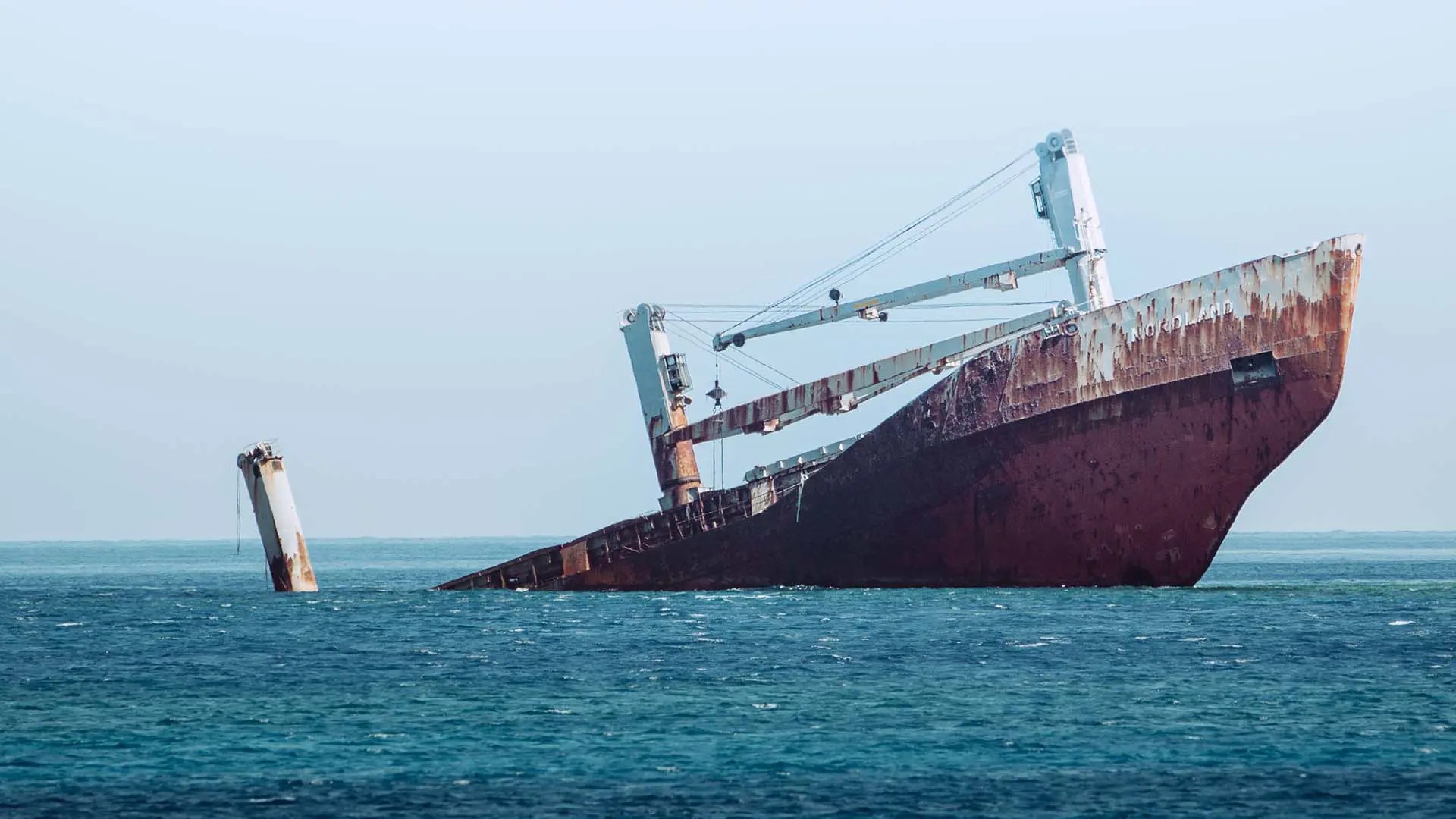
Polluting shipwrecks are a problem both in Sweden and in the rest of the world. Chalmers' wreck group consists of researchers with cutting-edge expertise in risk management, marine biogeochemistry, ecotoxicology and maritime environmental science. The work includes both risk assessment of potentially polluting shipwrecks and dumping areas for chemical warfare agents.
Polluting shipwrecks
In the early 2000s, attention was drawn to the problem of potentially polluting shipwrecks, both internationally and in Sweden. Thousands of wrecks, many of them from World War II, had now lain on the sea floor for so long that they had begun to rust and leak oil. Against this background, a group of researchers at Chalmers University of Technology has been working since 2007 to build up a risk assessment model, VRAKA , with the aim of facilitating prioritization of which wrecks it is most urgent to inspect in situ, and in the long run perhaps remediate. Chalmers' wreck group consists of researchers with cutting-edge expertise in risk management, marine biogeochemistry, ecotoxicology and maritime environmental science. VRAKA is unique in its kind, has attracted international attention and is currently used by the Swedish Agency for Marine and Water Management in their work to handle potentially polluting shipwrecks.
Wrecks pose a threat to the marine environment
The problem of wrecks is similar all over the world: wrecks containing oil or other environmentally hazardous substances pose a threat to the marine environment, which also has immediate consequences for people, for example in the form of beaches clad in oil or destroyed fish and shellfish stocks. There are also examples of wrecks that leak small amounts of oil for a long time. In the past, the general perception has been that nature itself takes care of these emissions. Chalmers' wreck group has worked on the hypothesis that the small continuous discharges may also be of importance and has therefore conducted ecotoxicological studies of low concentrations of oil. Today we know that even small spills of oil have a negative impact on nature.
VRAKA makes it possible to prioritize among the wrecks
Cleaning up a spill from a wreck is often more expensive than proactive emptying of the wreck before it has started to leak. Today, there is technology for emptying wrecks, and there are impressive examples where wrecks at a depth of 3600 m (!) have been emptied exclusively with the help of small remotely operated underwater vehicles. However, all underwater operations are costly, and it is of the utmost importance to prioritize the wrecks that pose the greatest risk first and preferably know in advance approximately how much oil there may be left in the wreck, as well as where it is located, before a clean-up operation begins. A further complicating factor is that there is usually no authority with designated responsibility for the wrecks.
Since 2016, the Swedish Agency for Marine and Water Management has been responsible for leading the work on the management of environmentally hazardous wrecks in Sweden in collaboration with other relevant authorities. This was a major step forward and the result of several years of intensive work, both within the framework of government assignments, as well as national and international research projects. An important part of the work has been Chalmers' development of VRAKA and the collaboration with the authorities continues in the area, now with an expanded focus to also include dumping areas for conventional and chemical warfare agents.
The risk assessment tool VRAKA
VRAKA is a method that aims to form the basis for decision support regarding potentially environmentally hazardous shipwrecks. The risk assessment methodology is based on a well-established risk management framework (ISO, 2009).
The method consists of two parts; (1) a tool for probabilistic estimation of the probability of a release, and (2) methods for estimating the impacts of such a release. Our work has so far been focused on the first part.
Schematically, the first part of VRAKA can be described as follows: estimation of the probability of discharge is made from a combination of the probability of environmentally hazardous substances remaining in the wreck and the probability of damage to the wreck as a result of a number of activities and site- and wreck-specific indicators that are considered to assess the wreck's status and sensitivity to impact.
Activities in the model that can affect a wreck are construction work, degradation (corrosion), diving, unstable bottom, military activity, shipping, storms and trawling. To get input data to the model on how these different activities can affect a wreck, we have used expert elicitation, to be able to describe how likely it is that different activities can lead to emissions from the wrecks with the help of structured questions.
This information is then combined with the probability that an environmentally hazardous substance remains into a probability of emissions based on a fault tree adapted for VRAKA. The assessments to be made can, if desired, be stated in the form of an interval rather than a point value if there is uncertainty about the absolute value of the input data. This means that results can be obtained in the form of probability distributions rather than point values, which means that the uncertainty conveyed via a specific input data is possible to read in the results.
Dumping areas with chemical warfare agents
During 2016-2021 Chalmers participated in the EU projects, DAIMON 1 & 2 (Decision Aid for Marine Munitions), where the goal was to investigate and provide support for decisions regarding the problem of dumped munitions in marine areas. The project included representatives from Poland, Finland, Germany, Sweden and Norway. In our immediate area, 65,000 tons of dumped chemical munitions have been reported in the Baltic Sea and Skagerrak. Dumping that took place during and after the First and Second World Wars. For example, the Allied and Russian troops carried out large-scale dumping operations of ammunition and chemical warfare agents in the Baltic Sea and Skagerrak after the end of World War II. At that time, there were large ammunition stocks left in Germany, which they needed to get rid of, and an easy way out was to dump it at sea in areas with great depths. Worn out or damaged ships were then filled with conventional ammunition and chemical warfare agents. The ships were then sunk in the deep areas, such as Måseskär on the Swedish west coast or Arendal deep outside the Oslo Fjord. In the Baltic Sea, large quantities were instead dumped in the depths of Bornholm and Gotland. At that time, individual bombs were thrown overboard from ships.


